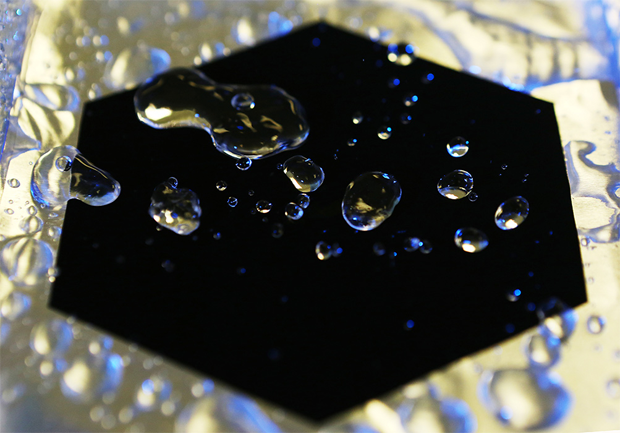
(Image Credits: SURREY NANOSYSTEMS https://www.surreynanosystems.com/vantablack)
The picture above shows Vantablack, which is the darkest artificial material ever made. The coating, which absorbs almost all light, was created by British company Surrey NanoSystems to eliminate light that interfere satellites and telescopes. Let us see what is this mysterious material and how it can be used.
1.Does the darkest means the blackest?
As we known, the color is actually a result of reflected light from the object. The color shown is depend on the light frequency. The Vantablack does not actually shows any colour since there is no light reflected from it. The reason why the light can not escape is because of the structure of Vantablack. It is made of a “forest” of tiny, hollow carbon tubes, each has the width of a single atom. According to the Surrey NanoSystems website, “a surface area of 1 centimeter squared would contain around 1000 million nanotubes.” These tubes can absorb light hits, so Vantablack is called the absence of color.
2.Does it feels like the way it looks?
“One of the things that people often say is ‘Can I touch it?’” said by Steve Northam from Surrey NanoSystems. “They expect it to feel like a warm velvet.” However Vantablack does not feels like the way it looks. When you touch Vantablack, it just feels like a smooth surface. Because the nanotubes are minute and thin, they will collapse easily by a slight human touch. So, Vantablack is extremely sensitive to touch, that explains why it can not yet be applied to unprotected surfaces like cars —one brush of a hand can make material lose its magic.
3.How much does it weight?
One thing interesting is that, though Vantablack is vulnerable to damage, it is super robust against other forces, like shock and vibration. This is due to the fact that every carbon nanotube is independent, and has almost no mass at all. Plus, most of the material is air. “If there’s no mass, there’s no force during acceleration,” Northam says. This makes Vantablack ideal for protected objects that might have to endure a jouncy ride, like a space rocket.
4.Any possibilities beyond its original applications?
As mentioned above, the material was initially designed for fields of frontier science, like space launch, where its ability to limit stray light makes it ideal for the inside of telescopes. But it could be applied in more daily objects with right conditions. Northam says Surrey NanoSystems has already been approached by a handful of luxury watchmakers interested in incorporating Vantablack into their wrist candy, and high-end car manufacturers want to use it in their dashboard displays for stunning visual appearance.
To my opinion, the invention of Vantablank is a great achievement for material chemistry. It suggest that the appropriate design can make the simple element show characteristics we never expected. The Vantablank give approaches to development of carbon-related synthesis.
Video:
Reference:
Evangelos Theocharous, Christopher J. Chunnilall, Ryan Mole, David Gibbs, Nigel Fox, Naigui Shang, Guy Howlett, Ben Jensen, Rosie Taylor, Juan R. Reveles, Oliver B. Harris, and Naseer Ahmed, “The partial space qualification of a vertically aligned carbon nanotube coating on aluminium substrates for EO applications,” Opt. Express 22, 7290-7307 (2014)
